

Your source of everything solar-powered!
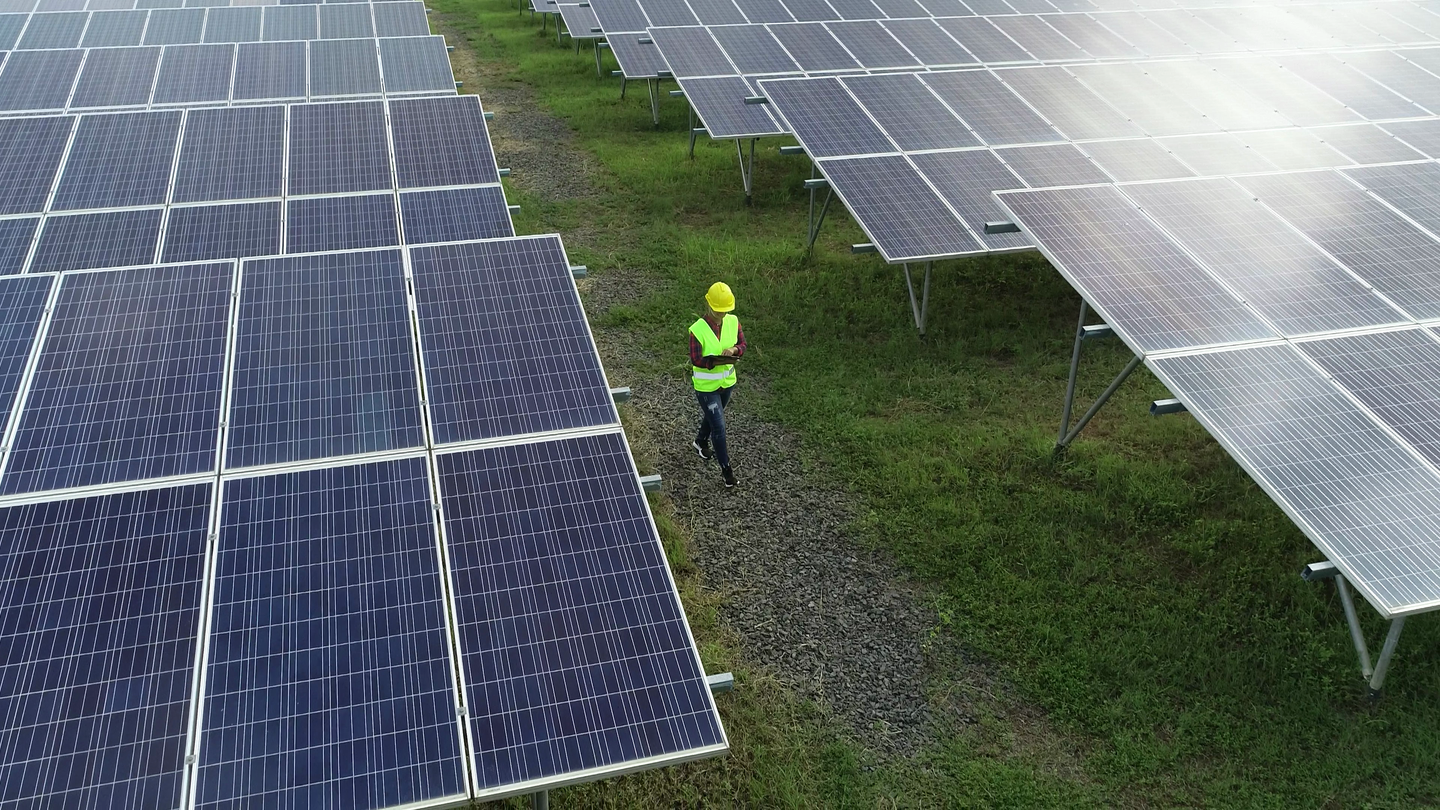
How To Do A Solar Site Survey – 11 Best Tips
- Post author: Super Human
- Post category: Solar Energy
- Post comments: 0 Comments
- Reading time: 20 mins read
Doing a site survey is an essential part of the successful implementation of any project, especially in the solar industry. This enables solar engineers, project managers, and surveyors to properly prepare and manage the design, plan, and estimation for the solar PV system.
By doing site surveys, the overall picture of the successful solar PV project becomes clearer. To have the best results for your solar power installations, know the best tips on how to do site surveys.
Table of Contents
Step-by-Step Guide for a Solar Site Survey
The solar site survey involves several essential steps to ensure a successful installation of solar panels:
Step 1: Initial Assessment
The first step is to evaluate the property’s suitability for solar panel installation. Factors such as the roof’s orientation, shading from nearby objects, structural integrity, and available space will be considered.
Step 2: Energy Consumption Analysis:
An analysis of the property’s energy consumption patterns is conducted to determine the appropriate size and capacity of the solar panel system required to meet the energy needs.
Step 3: Design and Layout
Based on the assessment and energy analysis, a preliminary design and layout for the solar panel system are developed. This includes determining the optimal placement and positioning of the panels for maximum sunlight exposure.
Step 4: Electrical and Structural Inspection
A thorough inspection of the property’s electrical system and structural integrity is performed to ensure compatibility with the solar panel installation. This involves assessing the electrical wiring, load capacity, and roof structure.
Step 5: Shading Analysis
Accurate shading analysis is conducted to identify any potential obstructions, such as trees, neighboring buildings, or other structures that may cast shadows on the solar panels. Minimizing shading is crucial to maximize the system’s efficiency.
Step 6: Permit and Code Compliance
The survey ensures that the preliminary design complies with local regulations, building codes, and permit requirements. Any necessary adjustments or modifications are made to meet these standards.
Step 7: Financial Analysis
A financial analysis is conducted to evaluate the return on investment, payback period, and potential savings from installing the solar panel system. This helps the property owner make an informed decision regarding the investment.
Step 8: Report and Recommendations
Finally, a comprehensive report is prepared, summarizing the findings of the survey and providing recommendations for solar panel installation. This report serves as a guide for the subsequent steps in the installation process.
By following these steps, a solar site survey helps ensure a well-informed and efficient installation of solar panels, tailored to the specific property and energy requirements.
What is a solar PV site survey?
A solar site survey involves assessing a property before installing solar panels, usually conducted once a sale has been finalized. The primary purpose of conducting a site survey is to verify the viability of the initial design, ensuring the development of a plan that meets the requirements for obtaining necessary permits.
Site surveys for solar PV projects are inspections of the area where the installation of the solar panels and other equipment is proposed. The main goal of this activity is to gather all the necessary information for the effective implementation of the solar PV system.
If you want to be efficient in the project design and implementation, a proper solar site inspection is a must. This activity is a great help in preparing proper system designs, estimates, drawings, and other technical documents.
By the end of the solar site inspection, you should be able to determine the following:
- Site’s climatic conditions.
- The energy requirement of the property.
- Physical details of the property (including the roof).
- Best spot for installing PV arrays.
- Possible shading and other obstructions.
- Status of the property – ground or roof area.
- Size of the property’s main electrical services.
- Location of the electrical point of connections.
- Best spots for mounting electrical components
- Condition of roofing and structural support.
- Environmental factors.
- Current monthly kWh consumption.
Once you have these data, it will be easier for you to do an accurate solar PV simulation and design for the project.
Why is a site survey important?

Performing a site survey can help an organization, or individual, save valuable time, money, and resources. It reduces the wastage of materials in case you over-install a system. It usually means you have purchased more solar panels than what can fit on the roof.
By doing a site survey, you will become more accurate in your list of materials needed. Aside from solar modules, you will also need to know the lengths and quantity of cables you need. After gathering all necessary data, you will then calculate for the voltage drop to properly size your solar cables.
Which Devices Are Useful for a Solar Site Survey?
If you don’t know what device you need to bring to make the solar site survey very productive, don’t worry because we got that covered. Here are the things that can be very helpful when doing the site visit for a potential solar PV system installation.
- Laser Measuring Tools
- Phone or camera
- Shade assessment device (Surveyor)
Making sure that you bring those important tools will ultimately help you in assessing the area for the solar power plant. It will save you time. It can also allow you to have the important details in creating the optimal design later.
So, let us now begin with the tips that can be helpful in making the most out of your site visit!
Tip #1: Create an initial PV system design.

For the past few years, this tip has been very helpful to many solar site surveyors. By creating a solar PV design , you will have an initial impression of where you want to inspect first on the site. If it’s possible, you can use Google Maps to see which areas are potentially viable for installing solar panels.
Then, you can use solar PV software to create an initial system design. In our previous posts, you can check the following solar PV design tools if you like.
- Helioscope .
- PVSol Premium .
Google Street View for the Initial Survey
Additional sub-tip: When doing the initial system design, you may also use Google Street View, especially, if the project is for a residential property. To do this, just head to Google Maps and enter the address of the house or building. Click and drag the “little human” icon from the bottom left corner into the streets you want to explore as seen in the image below. You may use your computer or phone when doing this.

Using this technique, you will be able to create your initial solar PV design easily. This will allow you to know more details of the property like the type of roof, tree shading, height of the building, and others.
However, not all places have access to Google Street View. So, if the site is not on Google Maps yet, it’s still fine as you will diligently do the site survey by applying the other tips below.
Tip #2: Create a checklist before the site survey.
It is crucial to be prepared before going to a site survey. Make sure you create a list of the important things you want to know when doing the inspection, or the things you need to prepare for this activity.
Sample Site Survey Checklist
Here’s an example list of things you need to prepare before the on-site visit:
- Business cards
- Measuring tape
- Shade assessment tool
- Appropriate PPE (personal protective equipment)
- Sample data sheets
- Warranty information for proposed components
- Domestic content information
General Details
Solar pv array details.
You can download the PDF format of this form from this link .
Once the activity is finished, you can look back on this list and see if all the points are clarified.
Tip #3: Prepare the proper measuring tools.
Of course, this is a must when doing a solar PV site survey. Preparing the appropriate tools for measuring the area will ensure that the available space is enough for the solar panels. It also enables you to take the height of parapet walls or other objects that may cast shadows on the modules.
List of measuring tools you might need:
- Tape Measure.
- Laser Distance Meters.
- Open-reel Fiberglass Tape.
- Measuring Wheels.
Tip #4: Ensure to inform the right people before the visit.
This tip is also very important. To be able to save time and energy, make sure that you have proper communication with the right people who are in charge of the place of visit.
This will ensure that they know when and why you are visiting the place. It will also help them prepare any personnel or access requirements to make the site survey smooth.
Tip #5: Make sure the right people attend.
Before going for the site survey, make sure that the right people will also be attending. This will allow you to properly enter the property, whether it be a residential, commercial, or industrial PV project.
It allows you to inform them about the areas you want to check like the roof, electrical rooms, etc. This way, they will be able to guide and help you get all the details you need for the solar PV project.
Tip #6: Take a lot of pictures.
It is, of course, very important that you bring a proper device to take pictures of the site. You may use whatever device is available to you as long as you can get clear images. Most of the time, solar engineers will use their smartphones for this task, which is also very effective and economical.
Here are some of the important things you need to take a picture of when doing site surveys:
- Areas where solar modules will be installed.
- Potential routes for AC and DC cables.
- Location of the potential source of shadows like parapet walls, AC units, trees, plants, etc.
- Electrical rooms.
- Single line diagrams (if available inside the electrical room).
- Electrical load schedules or load lists (if available inside the electrical room).
- Main electrical distribution board.
- Breakers inside the MDBs/SMDBs/LV Panels.
- Potential space/areas for inverters.
- Maintenance paths.
Tip #7: Take videos for documentation.
Usually, taking pictures is not enough when doing a solar PV site survey. That is why recording videos of the site will be greatly helpful for you.
Once you sit down in the office and start creating drawings and designs for the PV project, you will realize you might have missed some spots on the site. That’s the time you will revisit your video documentation and find the answer.
This tip has personally helped me avoid a lot of mistakes in the designing stage of a solar PV project. Just reviewing the videos will remind you of the things that are to be considered in your PV plant design. From roof skylights, AC units, or even the type of roofing materials, these are the things easily ignored when you don’t do video recording.
Another tip alongside this is to record your voice while taking videos , explaining what the particular video is all about. This is very effective especially when you are recording inside the electrical room where the point of connection is. In your video, make sure you are explaining helpful details with regards to installing the solar PV plant.
You may use your smartphone, go pro, or a handheld camera for this task. As long as you are comfortable with the device and it works well with you. Exploring the option of using 360-degree cameras is also an excellent choice.
Using this tip, you will be able to also share the videos you took with your colleagues for proper coordination. In effect, your team will also be familiar with the project even if they haven’t done the site visit themselves.
Tip #8: Get the existing electrical load details.

When doing the site survey, it is a must to get the details of the existing electrical load for your PV project. By doing this, you will be able to properly size the solar plant. This will give you an idea of the maximum capacity of the PV power that you will integrate with the property’s mains.
It will be shown as a single-line diagram. Sometimes, you will also see it in a table form which they call load schedule. You will usually see these on the walls of the electrical room, or the document holder on the backside of panel doors.
Tip #9: Check the connection points.
A connection point referred to here is the electrical panel where you want to connect your solar PV output. For residential buildings, it is usually the main electrical distribution board that is used as a point of connection.
However, you will need to check the main electrical rooms for bigger projects where LV panels are located. It usually has bigger breakers that are inside the huge electrical cabinets.
What you need to check is the availability of a spare breaker or space where you can fix your main solar PV breaker. This is important as this will let you know how easy or complicated it will be to connect your solar PV system into the building.
The easiest scenario is when the building has a spare breaker which you can use as a point of connection. It means you will just be pulling the main cables from the solar PV AC combiner box to the LV panel. Then, terminate the cables and you are good to go.
On the other hand, the worst case will be when there is no space available for the new solar connection inside the LV panel. This time, you will be forced to make modifications to the main electrical panel. That means you have to consider the cost of modifying the point of connection.
Tip #10: Check the potential maintenance paths.
During the initial site visit, it will also be helpful to know the potential maintenance paths for the solar plant. A maintenance path is necessary when the panels need to be inspected. It will also be used by maintenance people to clean the solar modules.
It is a good practice to include the maintenance path in your solar PV design. This way, you will know the adjustments you need to make during the installation stage. By checking this point during the site survey, you will be sure that your design will be more accurate and precise.
Tip #11: Get the end user’s consumption details.
Ask for the property owner’s monthly bills. This will allow you to know how much solar energy will be needed to attain a certain level of savings every month.
Getting the kWh consumption of the building is also important when calculating the number of years for the system to pay itself. It allows you to calculate the trajectory of cost vs. savings when installing solar panels. By doing this, you can optimize the PV project and design what size of a system is best for the customer.
Extra tip: Stay hydrated!
When doing a site survey, it is highly likely you will be exposed to the heat of the sun. Especially, when the site is for a huge solar project, you might find yourself sweating while taking pictures or videos. That is why keeping yourself hydrated all the time is also important.
It is a good thing to bring a bottle of water with you while doing this activity. Most people ignore it and end up being so thirsty during the site visit or even worse. You need to drink some water from time to time and not let your body be dehydrated.
By doing this, you will be more focused on the things you need to check and will end up not missing any important points. So, stay hydrated!
For every solar project, doing a site survey is fundamental to its success. This avoids errors and mistakes that could be very costly. Thus, it is always good not to overlook this process in order to have favorable results on your solar PV installation.
Related Articles
Solar panels on flat roofs: 7 things you must know, top 5 differences between on-grid and off-grid solar systems.
- How much does a 10kW solar power system cost?
If you want to learn more about solar power and other renewable energy sources, sign up for our email list now and be part of the Solar Powered Fam !
Email address:

Super Human
You might also like.
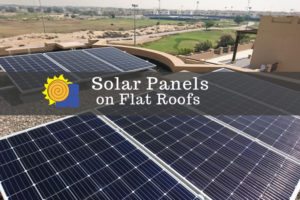
Leave a Reply Cancel reply
Climate Change and political education
Yia training course * 29.6 – 10.7 2013 in berlin / germany – organized by solar e.v..

Report: Power Plant Visit
Report – Visit of an open-cast coal mine, solar power plant and biogas-plant, in Bradenburg / Cottbus
The rest were renewable energy plants such as The Lieberose Photovoltaic Park that is the world´s third-largest solar power plant with a production of 70.8 (MW) by 900,000 solar panels. Also biomass and Wind Power Plant were seen.
Description:
The guide used interactive methods of teaching and showing to the group how the Power Plants work by using one of the group members as if he was the owner of the company. This person had to explain how the process of extracting was and how they produce the energy. Also the group member had to explain what were the disadvantages and advantages of each process.
At the PV power plant we had an extra guide that came to explain how they have done the deforestation and the repositioning of the animals by creating new habitats by planting trees.
Evaluation of the method:
As a method these visits were a great way of showing the magnitude of each kind of energy production and the impacts on environment, local infrastructure, economy and social aspects.
The guide was always interacting with the group, asking questions and trying to search the answer in the audience at first, and afterwards telling the answers at the end of the particular conversations.
The aim of the method was to improve the capacity of our background knowledge and thoughts about issues related to the different areas involved in energy production. Like this, people can also improve the critical thinking and be more involved. All of us were interested and active all along the visits.
This kind of method can be used in all age groups, about different topics. In our opinion, the group size should be adapted to the different topics and situations. Because we think that our group should have split because then more people could have active voice/role on the method.
The main advantage of this method was the capacity of the guide to involve the whole group in the discussions, focusing the attention and creating moments of brainstorming before explaining and giving all the informations about the functioning of the power plants. The approach of the guide was very educational in every aspect (experiencing, in an active way using all our senses, like smelling, touching, seeing, hearing…). The only limiting factor we found was the group size. Groups should have no more than 10 or 12 people.
Leave a Reply Cancel reply
You must be logged in to post a comment.
- My EagleView
- CONNECTExplorer
- EagleView Cloud
How To Do A Residential Solar Site Survey
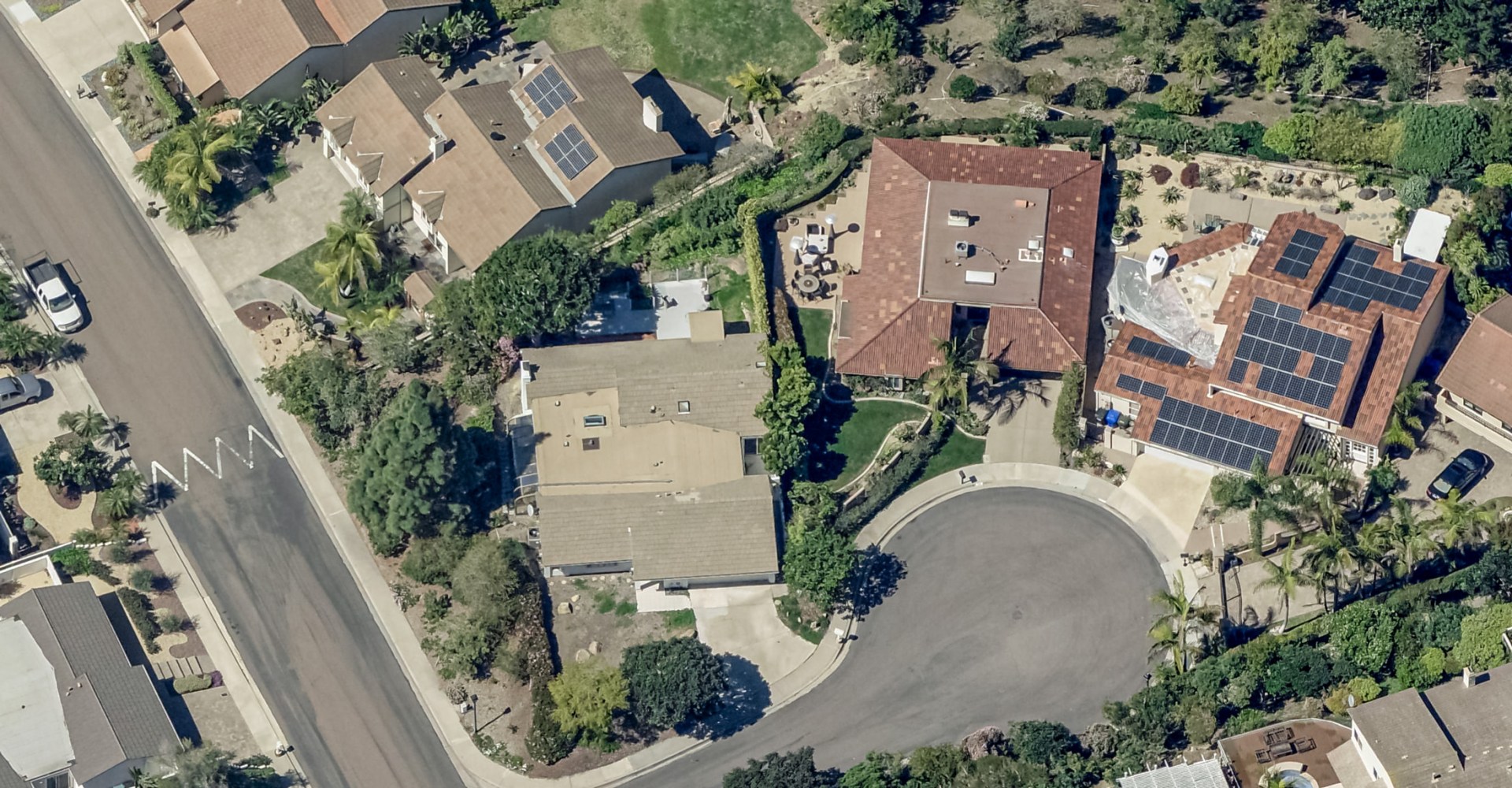
Once your sales rep has shared preliminary designs with the homeowner and closed the deal (nice job!), it’s time to conduct a solar site survey. This ensures that the preliminary design is feasible by confirming measurements and obtaining other relevant information required to plan the project.
The majority of a site visit is performed externally, meaning on the outside of the property, and can be done manually or remotely. If you’re doing manual site visits, this is when you’ll send an inspector up on the roof to double-check everything.
But if you (or your company) uses remote technology to perform site surveys, you may have the option to pull roof data based on high-res aerial imagery. And this method can be particularly effective at reducing the time from sale to installation.
So, we’re going to walk through the entire process of performing a residential site survey, whether you’re doing it manually or remotely. Here’s an overview of the steps involved:
- Gather information
- Pull satellite or aerial imagery
- Get prepared
- Assess the condition of the roof
- Take measurements and note obstructions
- Perform a shade analysis
- Take photos
- Assess the electrical system
- Gather information for structural analysis
- Upload info and photos to your system
What’s a solar site survey?
A solar site survey is an inspection of a property where solar panels are going to be installed, typically occurring after a sale has been closed. The crux of doing a site survey is to ensure that the preliminary design is feasible in order to create a permit-ready plan.
As we mentioned above, the external site survey can be done by either physically inspecting the property or by using remote technology. Other parts of the survey may need to be done in-person, depending on available property information.
What information do you need to gather from a site survey?
The information you collect during a typical site survey is what you’ll use to take your preliminary design and turn it into a permit-ready plan. Usually, here’s what contractors need to gather from the survey:
- Roof measurements and data including pitch and azimuth
- Solar exposure through shading analysis
- Visual inspection of roof conditions and obstructions
- Information about the electrical system to determine interconnection methods
- Structural information like rafter size and spacing
10 steps to do a solar site survey
Now we’ll go over the most important steps in a solar site survey — covering everything you need to know to get the job done right, even if you’re doing it for the first time.
Step 1: Gather information
First things first, you need to gather all the pertinent information about the property. This includes basic things like the street address along with local utility and permitting details.
You’ll also want to have the preliminary design and contact on hand. This helps to understand the details and limitations of the proposed project along with wants and needs specific to the homeowner.
If you’re doing the survey in-person, you’ll then need to coordinate with the homeowner to schedule a time to come out to the property. Depending on how your business works, you may also need to coordinate this time with project engineers, designers, roofing contractors, or other contributors. If you’re doing the site survey remotely, you can share the report with all of these team members to collaborate and work as efficiently as possible. And, unlike external on-site surveys, remote surveys are not dependent on daylight hours.
Step 2: Pull satellite or aerial imagery of the property
The next step in a solar site survey is to pull satellite or aerial imagery of the property to make some preliminary assessments and determine roof access points and limitations.
As far as satellite vs aerial imagery, it depends on what you’re looking for and how you conduct your site surveys. If you just want to take a quick look at the roof before heading out to the site, satellite imagery is going to be fine. And you can access satellite imagery for most properties for free using Google Earth.
However, if you want to see the roof in detail and use the imagery to get accurate measurements, aerial photography is the better option. EagleView’s high-resolution aerial imagery, for example, provides up to 70x the detail of satellites .
Step 3: Get prepared
If you do need to head out to the site, make sure to gather all the necessary supplies and tools so you don’t have to make another trip. Here’s a quick checklist to go over each time you load up:
- The solar project contract or preliminary design
- Measurement tools – tape measures, laser distance meters, and open-reel fiberglass tape.
- Shade assessment tool
- Phone or camera
- Appropriate PPE (personal protective equipment)
- Brochures or sales material
- Laptop or tablet
- Business cards
- Pencil and clipboard
Step 4: Assess the condition of the roof
Whether you’re on site or using aerial imagery, the first thing to do is assess the condition of the roof, including how many layers of asphalt shingles are there. This is critical because the roof needs to be in good enough shape to support the installation of the solar system.
It also needs to be new enough so it will last a while — like for the next 25 to 30 years (the average lifespan of solar panels).
Otherwise, the panels will have to be removed when it’s time for a new roof and then replaced. With that in mind, a general guideline is asphalt shingle roofs should be 10 years old or less and in good condition before beginning solar panel installation.
Author’s note: As you can see, roofing and solar panel installation go hand in hand. So if you’re in the solar business already, it makes sense to offer roofing along with it (and vice versa). Once you add roofing to your business offerings, you can then cross-sell new roofs to solar customers. This profit-driving strategy also adds convenience for the customer who won’t have to find two separate contractors to get the job done, often leading to delays and cancellations. EagleView’s Inform Essentials+ and Advanced include all of the information needed to quote, plan, and order materials for a roofing project alongside the solar installation.
Step 5: Take roof measurements and note obstructions
Once you’ve evaluated the condition of the roof, the next step is to get precise measurements. If you’re doing this manually, you’ll need to climb up on the roof and measure everything on the roof surface to determine the allowable solar module area.
You’ll also need to calculate the roof area and pitch, as well as note any obstructions like chimneys and skylights. When doing so, it’s generally a good idea to pick one corner or edge of the building as your reference point and measure all obstructions relative to that spot. This makes it easier for engineers and drafters down the road to accurately translate the information into their CAD program. Author’s note: If you want to perform your external site survey remotely (maybe using a product like EagleView’s Inform Essentials+ or Advanced ) you can skip this step entirely. Accurate roof data like measurements and calculations will be delivered straight to your desk.
Step 6: Perform a shade analysis
The next step is to perform a shade analysis. If you’re on site, take note of any nearby trees or buildings that are taller than the roof. Next, use a hand-held device such as the Solmetric Sun Eye or Solar Pathfinder tool to collect data points across the roof. Readings should at least be taken on every roof facet; at least one in each corner and one in the middle.
When recording the data from the readings, be careful to label the location of the reading correctly. Also be sure that the device is level when you’re using it — as either of these factors can substantially affect the results.
(Note: For many geographies, shade analysis taken in the winter can vastly differ from the summer in the same location given the lack of foliage in the surrounding shade scene.)
If you’re doing the survey remotely, you can use a product like EagleView’s Inform Advanced to acquire solar access value (SAV) calculations. Unlike handheld devices that collect a handful of data points on a roof and can vary based on the user, EagleView’s technology consistently captures thousands of data points.
“EagleView is enabling us to significantly reduce time spent completing exterior site assessments, which means we can shorten project lifecycles and streamline our existing operational processes,” said Robert Bessler , Executive Director of Solar Operations at Semper Solaris.
“And with accurate 3D models and solar access values, we can also design systems that maximize energy production for our customers. We see the EagleView Inform™ Advanced report as being a key component to help us continue growing our business.”
Step 7: Take photos of everything
If you’re doing your survey in-person, it’s important to take photos of everything. This will help the engineers and planners get a better idea of the project during the final design phase.
When doing so, take care to get pictures from both close-up and far-away. Close-up pictures are essential for noting details, especially of things like the electrical system. But pictures from far away are also important because they show the designers the layout and other constraints they may be working with.
Here’s a general list of photos you’ll need. (And remember, it’s always better to have too many pictures rather than not enough.)
- Front of the building, including house number
- South side of house (from south looking north)
- South yard (From north looking south)
- Roof or array location
- Areas of roof that need repair or present concern
- Any obstructions on the roof
- Roof pitch (get profile for pitch angle)
- Electric meter (be sure to get the meter number clearly in the picture)
- Main electrical panel, from far away and up close with door open to see the breakers and equipment label
- The transfer switch if one is present (typically used with whole home generators)
- Interior walls where equipment will be located (like inverters or batteries)
- Roof structural members in the attic, be sure to take a complete view in the attic to capture any knee walls or other members which would effect the structural analysis
- Any potential problems or issues
- Any other photo requirements from your specific organization
Step 8: Assess the electrical system
Another important area that needs to be assessed during a site survey is the home’s electrical system. This will determine how the solar system will be interconnected to the home’s electrical system and may inform equipment selection and/or required upgrades.
When inspecting the electrical system in person, make detailed notes and take clear photos. You’ll want to get close-up photos that show the nameplates and specifications. And also some from a distance to show the designers the space that’s available. Here’s a checklist of electrical items to assess:
- Electric meter close-up (include utility meter number)
- Main disconnect location
- Electrical panel location and sub-panels (if applicable)
- Electrical panel circuit breakers
- Transfer switch if one is present
- Proposed inverter and battery location
- Possible locations for running conduit
- General locations of proposed electrical equipment
Step 9: Gather info for structural analysis
The next step in the site survey process is to gather information required for the structural analysis. The structural analysis will identify if the existing structure can bear the load and counter the potential uplift of a retrofit solar system.
For this step you’ll need to note the type of structure and whether the roof uses traditional framing with rafters or a truss. You’ll also need to note the structural member size, along with the spacing and span for each roof facet that will be used for solar.
Authors Note: EagleView’s Inform Essentials+ and Advanced products provide the maximum rafter span per roof facet which can eliminate some of the information that has to be gathered on site
Step 10: Upload information and photos to your system
If you’re doing the survey manually, the final step is to take all the information and photos you gathered at the property and upload it into whatever system your company uses.
Typically this gives the other members of your team access to the site survey information so they can move ahead with the design and permitting process.
If you’re using remote technology to complete your external site survey, this is another step that can be skipped.
As you can see, there’s quite a bit of information gathered during the site survey. Here’s a quick roundup of the 10 steps in a solar site survey:
- Gather information and schedule the appointment
- Pull satellite or aerial imagery of the property
- Take roof measurements and note obstructions
- Take photos of everything
- Upload information and photos to your system
Want to eliminate exterior site surveys? EagleView can help
EagleView’s solar products like Inform Essentials+ and Advanced help contractors go from sale to install faster by eliminating the typical exterior site survey process.
A representative at SunPower explains that “EagleView reports help us to eliminate in-person site surveys and shorten project lifecycles by up to two weeks. Everyone wins: homeowners go solar faster, our dealers avoid an additional site visit, and we reduce project overhead.”
What EagleView does to help
EagleView compliments or eliminates your site survey process, delivering the external roof data you need to plan a solar project quickly. We help contractors with the following:
- Comprehensive remote measurement solutions, including pitch, azimuth, and remote shade analysis.
- Design solutions that allow you to create precise digital models instead of drawing over 2D images and estimating the size and location of obstructions.
- Determine optimal panel placement for solar energy production based on solar access values derived from sophisticated shade analysis.
- Create proposals, permit sets, and project plans faster with digital file exports for popular design programs.
Try EagleView’s aerial imagery tool to get fast, accurate roof measurements — no ladder required. Learn more about EagleView’s imagery tool.
Press Inquiries
For media opportunities and other related press inquiries, please email
Explore photos and biographies of EagleView’s executive leadership team
You might also like
© 2024 EagleView Technologies, Inc. and Pictometry International Corp. All rights reserved. Reports issued by EagleView Technologies are covered by one or more international and U.S. patents and pending applications, including U.S. Patent Nos. 8,078,436; 8,145,578; 8,170,840; 8,209,152; 8,515,125; 8,825,454; 9,135,737; 8,670,961; 9,514,568; 8,818,770; 8,542,880; 9,244,589; 9,329,749; 8,938,090 and 9,183,538. Other patents pending.

Why Site Visits Are Important in the Solar Project Lifecycle

Site visits are a crucial part of any solar project, as they help ensure not only a smooth installation, but also the long-term effectiveness of the system. Let’s find out more about site visits, why they’re important, and the precautions being taken in the wake of COVID-19.
Contact us for a free PowerFlex X™ demo .
What Is a Site Visit?
A site visit is an in-person inspection of a proposed location for a solar project completed by a solar professional — usually the project engineer. The goal is to examine the site for structural and environmental factors that play a role in determining the system’s size, design, and position on the property, as well as identifying any safety concerns relevant to an installation. Economic factors, such as the percentage of the site’s annual electricity costs the system will offset, are also taken into account. Solar developers use these findings to create a detailed project proposal, and ultimately design the system.
Why Are Site Visits Important?
Site visits are important because they reveal details that can affect the installation or performance of the solar system. One example is solar access, or how much sunlight the site receives year-round. This information is critical since the more time a solar panel spends in the shade, the less energy it produces. Utility poles, chimneys, or vegetation such as trees can all produce unwanted shading, and noting such impediments during a site visit allows developers to mitigate their effects when designing the system. Site topography and roof orientation are also important — in the northern hemisphere, solar panels should be mounted facing south to ensure optimal sunlight exposure.
Technical assessments are made during site visits as well, most notably scoping out potential locations for equipment. This includes identifying potential interconnection points and inspecting the area between them and the proposed solar array for encumbrances. Finally, the solar professional conducting the site visit will investigate any potential constraints for accessing the site, discuss when the system can be installed, and note any other technical requirements of the project.
COVID-19 Site Visit Precautions
Since site visits are done in person, special precautions must be taken to limit possible transmission of COVID-19. At PowerFlex, strict policies have been implemented to ensure the health and safety of both our clients and our employees. In addition to following CDC guidelines during site visits, such as maintaining 6 feet of social distance and wearing a face covering at all times, PowerFlex requires employees to conduct temperature checks at home prior to visiting a work site. Employees who exhibit symptoms such as fever, cough, or difficulty breathing, or have been in close contact with an individual diagnosed with COVID-19, are required to stay home. Conducting site visits is a key part of the process, and we’ve established new best practices to maintain the safety and health of all involved parties.
Year after year for over a decade, PowerFlex has provided high-profile clients like Target , ASICS , and Bloomberg L.P. with turnkey solar and energy storage solutions that help lower energy costs and meet sustainability goals. Contact us today for a free consultation, and see what going solar can do for your business.
Related Resources

See how PowerFlex can empower you and your site.
- Visit our Resource Hub
- Subscribe to our Policy & Incentive Updates
- Subscribe to Newsletter
- Contact Sales
- PowerFlex X™ FAQ
- Book a PowerFlex X™ Demo
- Resource Hub
- Brand Guide
- Contact Support
- Terms of Service
- Terms and Conditions
Connection denied by Geolocation Setting.
Reason: Blocked country: Russia
The connection was denied because this country is blocked in the Geolocation settings.
Please contact your administrator for assistance.

1-888-678-6227
Embarking on the journey towards harnessing solar energy is a commendable step toward sustainability and a reduced carbon footprint. However, the success of any solar panel installation hinges on a critical yet often overlooked aspect: the Solar Site Survey .
In this detailed guide, we explore the importance of a solar site survey checklist.
We will uncover the essential components, requirements, and formats that contribute to a successful solar site survey. By understanding these aspects, you will gain the confidence to navigate the renewable energy landscape effectively.
What is the Solar Site Survey Checklist?
A solar survey checklist lists items that should be included in a survey of a potential solar power installation site. The checklist should include items such as the size and orientation of the site, the amount of shading, the availability of water and electricity, etc.
By including these items on the checklist, solar installers can ensure that they can collect all of the necessary information about a potential installation site.
What information do you need to gather from a Site Survey?
Usually here's what needs to gather from the survey:
1. Customer information:
This can include things like the customer's name, contact information, company's name, and the property's address that will be surveyed for the solar system installation. This information will help ensure that the survey is conducted properly and accurately.
2. Site information:
This includes things like the Location of the site, Latitude and Longitude, Roof height, Roof pitch-free Space, Structure Type ( RCC/ Metal sheet) the terrain, and any potential obstacles that may be present.
This information is important to determine the best way to set up your solar panel system and ensure that you have a clear signal.
3. Site data:
You'll need to collect various data points about the site itself, such as its location, size, topography, climate, and so on. This data will help determine the best way to access the site, what type of equipment will be needed, and what safety precautions need to be taken.
4. Electrical Infrastructure:
To properly assess a potential electrical installation site, you will need to gather information about the electrical system and infrastructure.
This includes the Electrical grid, Connection type ( single/3 phase) power lines, Sanctioned load, Installed capacity and voltage of transformers, Consumption load, and other wiring.
You will also need to find out about any permits or licenses that may be required. Once you have this information, you can start to assess the feasibility of the project.
5. Potential hazards:
You'll need to be aware of any potential hazards that may be present at the site, such as toxic materials, dangerous wildlife, steep terrain, and so on. This information will help you plan for a safe and successful survey.
6. Additional documents:
If the site you're surveying is part of a larger project, you'll need to gather any additional documents that have been prepared for the project.
This could include things like engineering reports, geotechnical reports, recent electricity bills, single-line diagrams, rooftop sketches, site photos, CAD files, environmental assessments, and more.
Sunbase design software provides CAD designs for easy implementation, it allows to download files which are digital files that contain 3D and 2D designs as well as details on materials, methods, and other information.
7. Client requirements:
It's important to understand the client's requirements for the project, as this will dictate what needs to be included in the survey. Things like the purpose of the survey, the budget, the timeline, and any specific concerns or requests they may have.
You can read this article to learn more about Sunbase Solar Design Software
Components of a Solar Site Survey Checklist
By incorporating some considerations into your solar site surveys, solar installers can make informed decisions and provide accurate assessments of the suitability of a location for solar power installations.
Here's a breakdown of all the components:
1. Local Climate
Average sunlight: Measure the amount of sunlight the location receives throughout the year. Tools like solar maps can help provide this information.
Average temperatures: Consider temperature variations and extremes, as they can affect solar panel efficiency and lifespan.
2. Site Assessment
Size of the site: Evaluate the available space for installing the solar energy system. Larger sites may accommodate larger systems.
Orientation: Determine the optimal orientation of solar panels based on the site's geography. South-facing solar installations generally receive the most sunlight.
Shading: Identify potential sources of shading, such as trees or nearby buildings, as they can significantly impact azimuth solar exposure and therefore energy production.
Availability of water and electricity: Ensure that the installation site has access to necessary resources for maintenance and operation.
3. Performance Evaluation
Assess the solar system's performance based on the collected data on the site survey form. Use software tools or models to estimate energy production.
Consider local regulations and permitting requirements, as they can impact the feasibility and timeline of the installation.
Evaluate the economic viability, including the cost of installation, potential savings, and available incentives or rebates.
4. Environmental Impact
Assess the environmental impact of the installation. Consider factors such as land use, potential disruption to local ecosystems, and disposal/recycling of materials.
5. Financial Considerations
Evaluate the return on investment (ROI) and payback period to determine the project's economic viability.
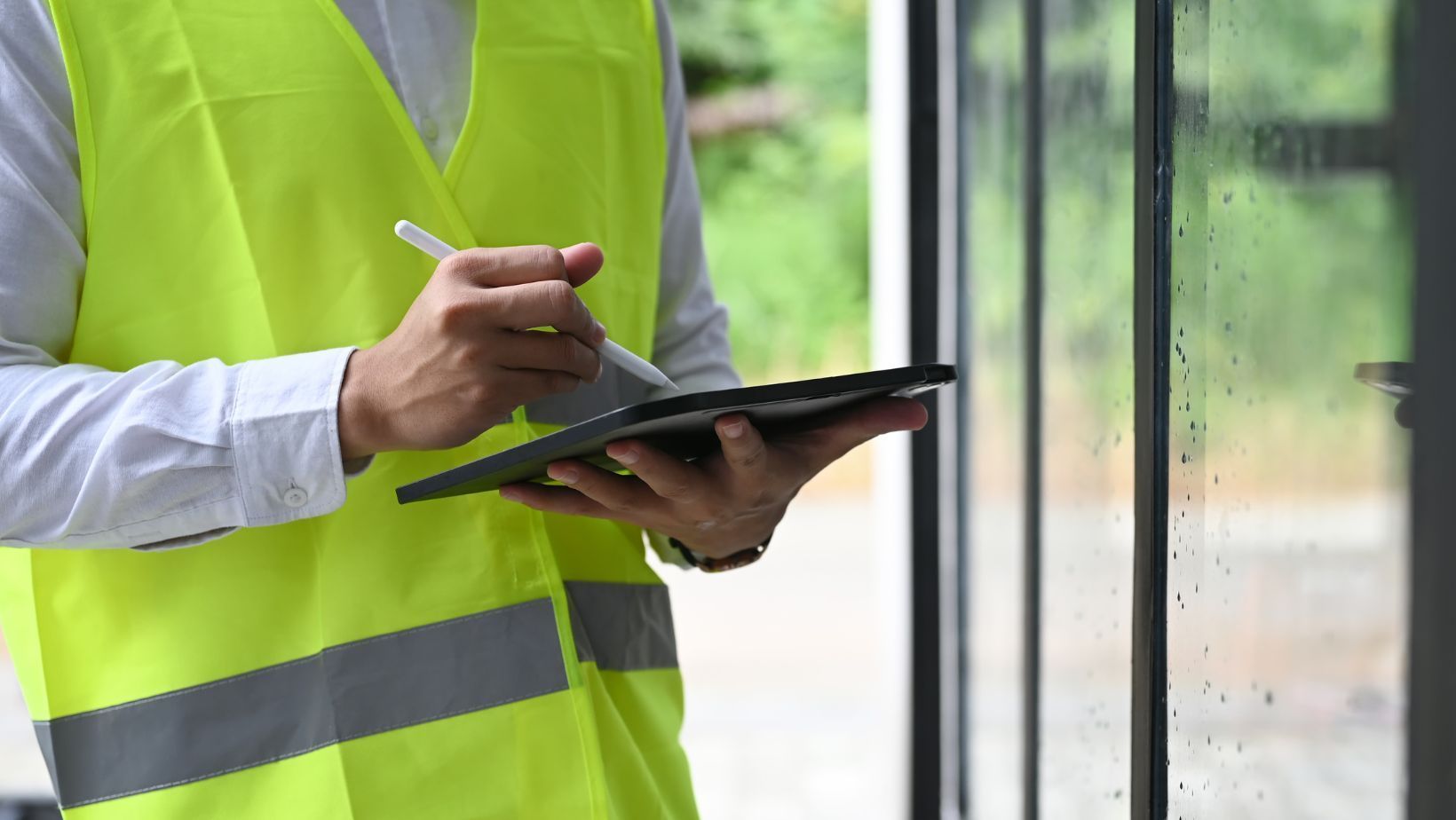
Solar Site Survey Report Requirements and Format
A solar site survey is an essential step in the process of planning and designing a solar energy system. It involves collecting data and analyzing various factors to determine the feasibility, efficiency, and overall success of a solar installation at a specific location.
To ensure the accuracy and consistency of a commercial or residential solar site survey report, certain requirements and formats must be followed when conducting a solar site survey.
Now we will outline these requirements and provide a detailed format for conducting a comprehensive solar site survey:
Requirements
- Property Ownership Information: The first requirement for a solar site survey is to obtain ownership information of the property where the installation will take place. This includes the name and contact information of the property owner as well as any relevant legal documents such as land deeds or lease agreements.
- Structural Information: Accurate and detailed structural information is crucial for determining the appropriate placement and mounting of solar panels. This includes measurements and diagrams of the roof, as well as any potential obstructions such as chimneys or vents.
- Electrical Infrastructure: A thorough understanding of the property's electrical infrastructure is necessary to determine if it can accommodate a solar installation. This includes information on the main electrical panel, utility meter, and any existing wiring or circuits.
- Shading Analysis: The amount of shade that falls on a property can greatly affect the efficiency of a solar energy system. A shading analysis must be conducted to determine potential obstructions such as trees, buildings, or other objects that may cast shadows on the solar panels.
- Energy Consumption Data: To accurately size and design a solar energy system, data on the property's energy consumption is required. This includes historical energy bills and usage patterns to determine the appropriate system size and potential cost savings.
- Introduction: The first section of the report should provide an overview of the purpose of the survey and the scope of work to be completed.
- Property Information: This section should include all relevant ownership and structural information.
- Electrical Infrastructure: Here, provide a detailed assessment of the property's electrical infrastructure, including any necessary diagrams or measurements.
- Shading Analysis: Include a shading analysis report with diagrams and images to demonstrate any potential obstructions that may affect solar panel placement.
- Energy Consumption Data: This section should include a thorough analysis of the property's energy consumption and how it may impact the design of the solar energy system.
- Conclusion: The final section should summarize the findings of the survey and provide recommendations for moving forward with the solar installation process.
Additional Considerations
- Weather Conditions: It is important to take into account weather conditions, such as average sunlight hours and potentially extreme weather events, when conducting a solar site survey.
- Local Regulations: Before beginning the survey, it is essential to research any local regulations or restrictions that may impact the installation of a solar energy system.
- Safety Precautions: When conducting a physical assessment of the property, safety precautions must be taken to avoid any accidents or injuries.
Things You Must Remember:
- The report should be accurate and up-to-date: Solar panels can only be installed at locations that receive enough sunlight, so the report must include data on sunlight exposure
- The report should be comprehensive: It should include information on all potential obstacles to solar panel installation, such as shading from trees or buildings.
- The report should be well-organized: Solar companies need to be able to quickly and easily find the information they are looking for.
Solar Site Survey Checklist acts as a comprehensive guide for solar installers, offering a structured approach to evaluate potential installation sites. From considering the local climate and site-specific details to assessing environmental impact and financial considerations, this checklist ensures a thorough analysis of key factors.
By adhering to the checklist's requirements and format for a detailed solar site survey report, solar companies can make informed decisions, enhancing the efficiency and sustainability of solar panel installations. If you need software for designing solar project software along the way, don’t hesitate to contact us to book a demo to learn more about solar design software .
About Sunbase
Sunbase helps solar companies succeed through a suite of Solar CRM tools like Solar Lead Management Software , Solar Proposal Software , etc.! To book your free demo or an appointment, contact us here
< Older Post
Newer Post >
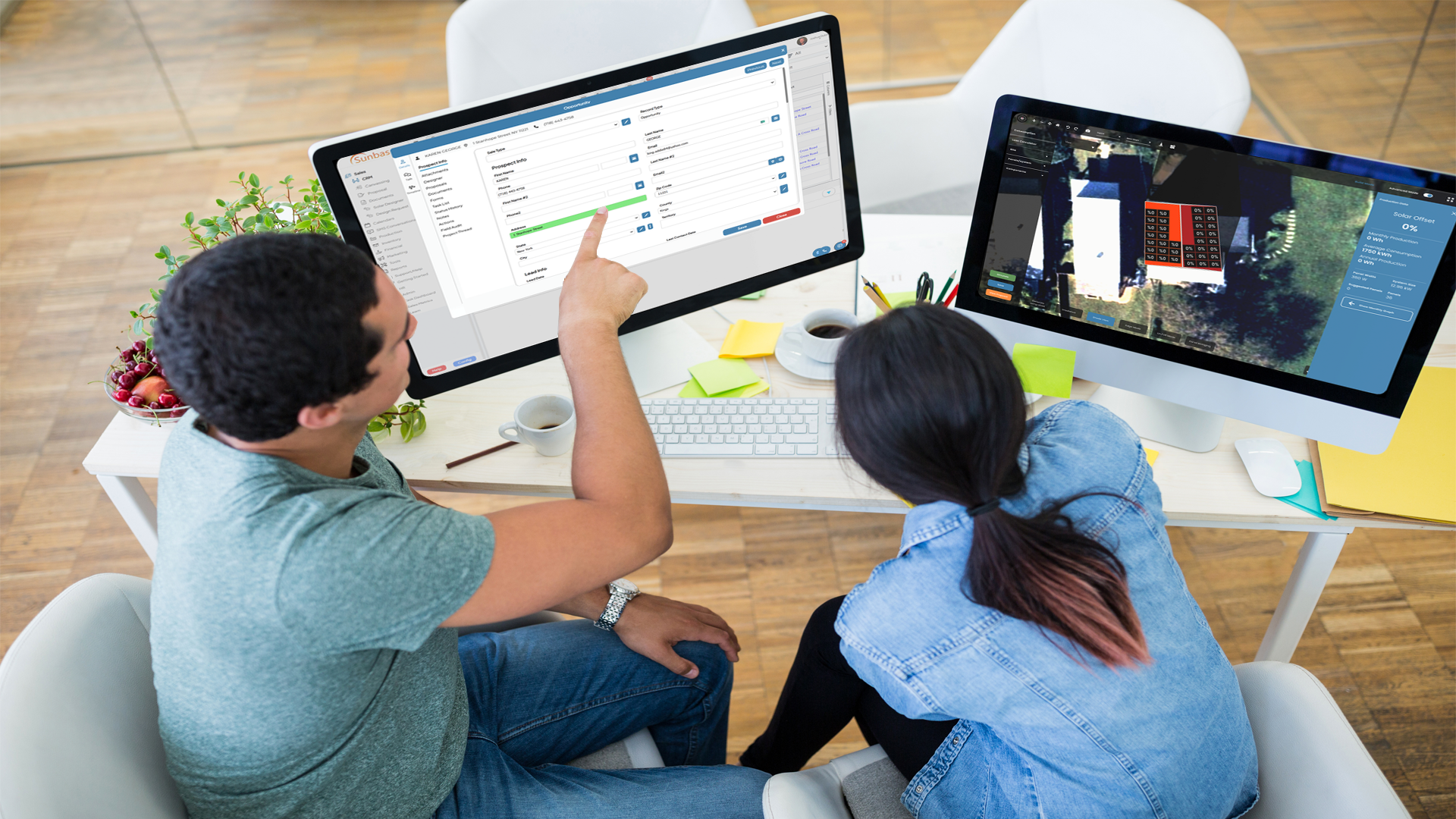
10 Powerful Ways a Roofing CRM Can Boost Your Business Growth

Must-Have Features for Your Solar CRM: The Top 10 to Ensure Success

How can Roofing Management Software help with Estimating and Quoting in the Roofing Industry
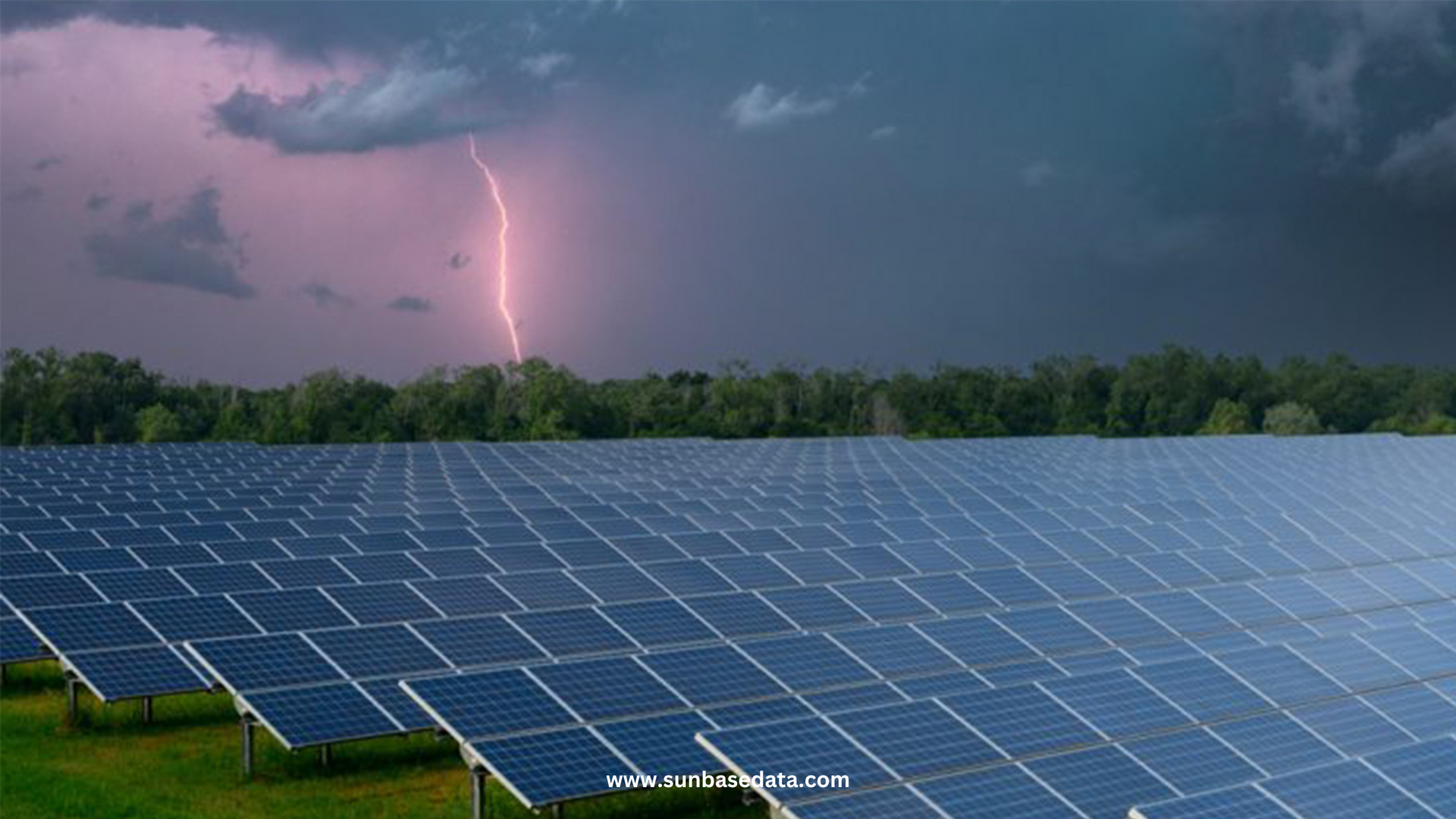
Solar Solutions: Early Detection and Resolution for Mitigating System Risks in Extreme Weather
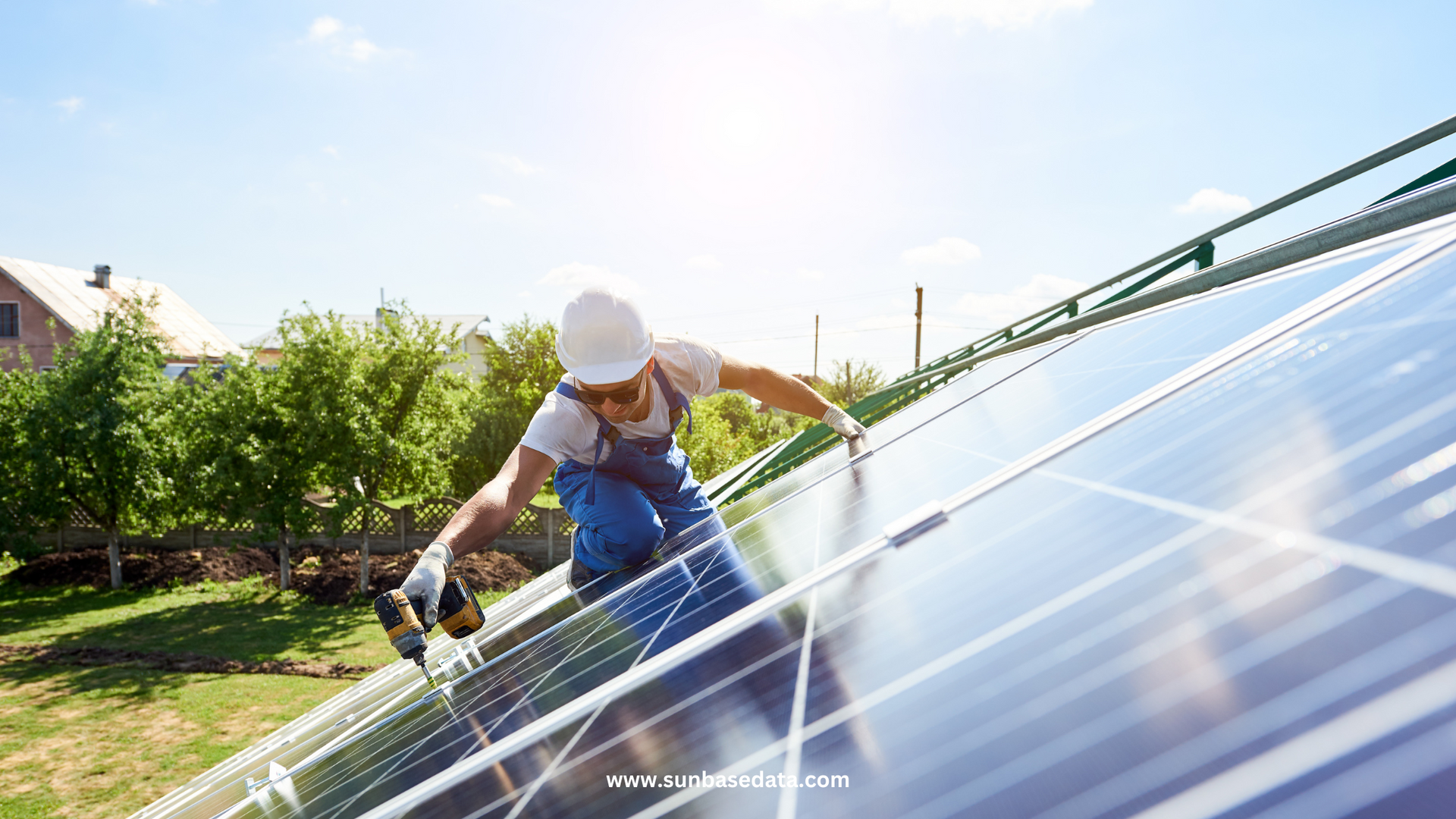
Eco-Friendly Roofing Solutions: How To Implement Sustainable Practices?
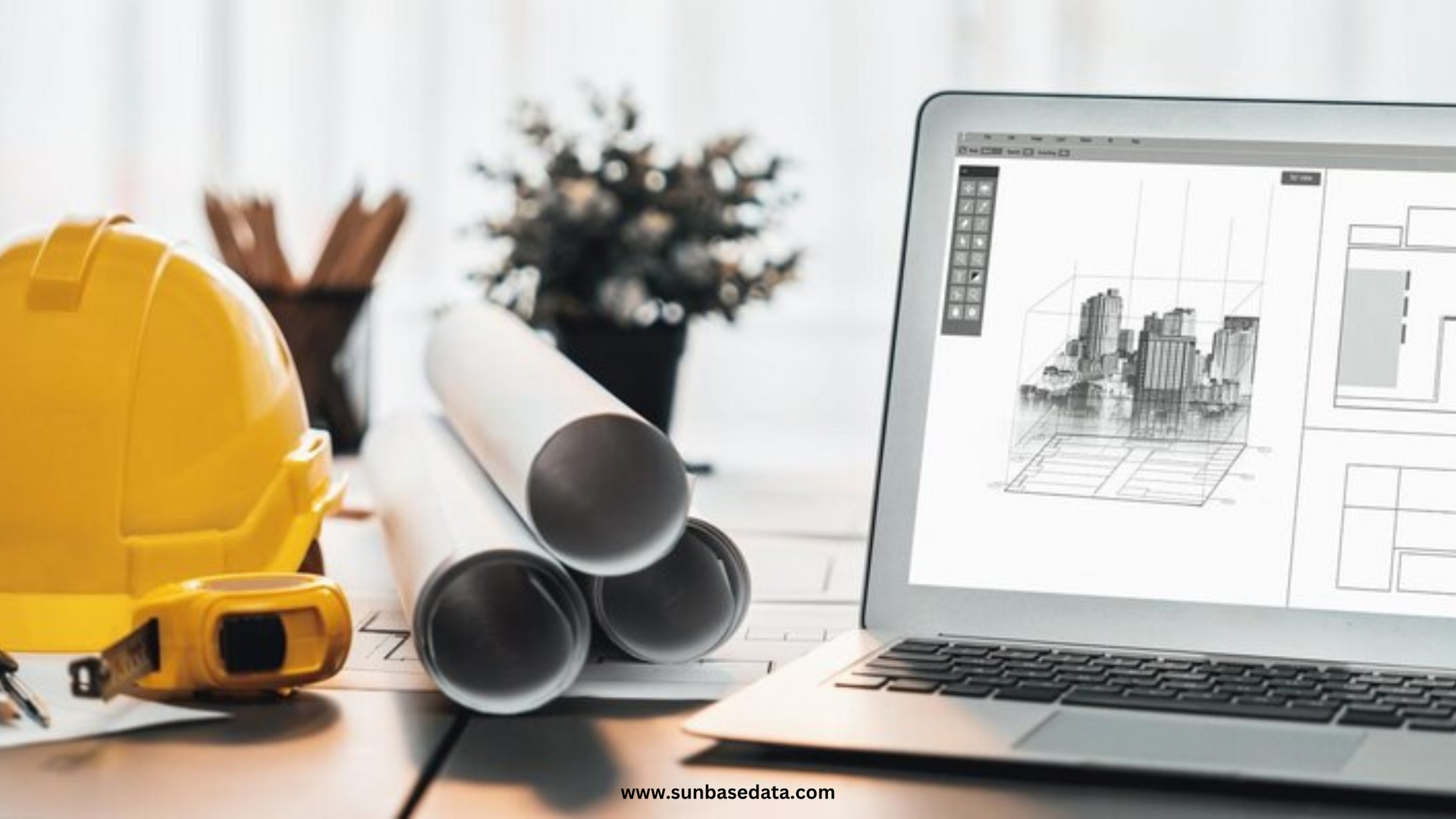
Revolutionize Your Business: Time and Cost Savings with Integrated Construction Software
Download the app from
Copyright ©2021 Terms of Service | Privacy Policy

Site Survey Checklists
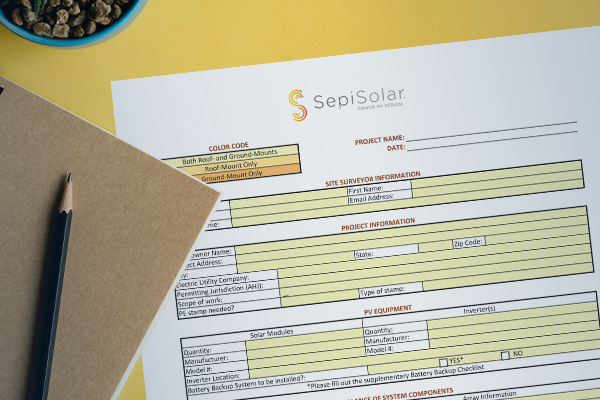
Residential Solar Site Survey
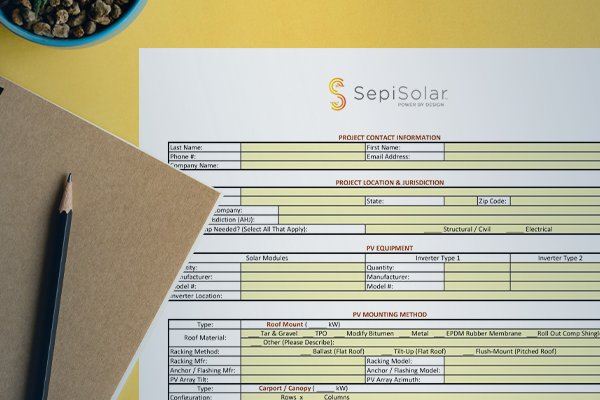
C&I Solar Site Survey
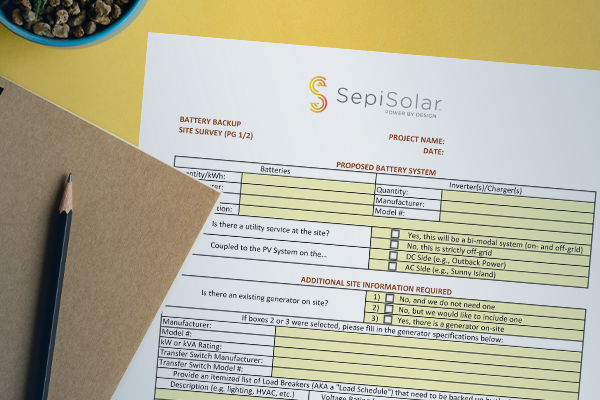
Energy Storage Site Survey
Get a free solar or storage design quote., ca small business enterprise.

Subscribe to the SepiSolar newsletter:
EXPERT WITNESS
Expert Witness Services Experience Qualifications Talk to an Expert
ENGINEERING SERVICES
Residential Commercial & Industrial Utility Scale
Energy Storage Solar Microgrids
Project Product
About SepiSolar Meet Our Team Testimonials Entity Codes
GET A CONSULTATION
Contact Solar Expert Witness Contact Engineering & Design Email Us Call (510) 940-9750
© 2024 SepiSolar. All rights reserved.

Solar site survey report
May 29, 2023
Site surveys are indispensable to solar PV installation projects. Let’s look at site survey best practices, checklist and formats for solar site survey report.
Table Of Contents 1. Objective of site survey 2. Site survey checklist 3. Site survey form template 4. Carrying out site survey 5. Preparing the report 6. Site survey report format
Objective of site survey
Main objective of a site survey is to gather customer details, site measurements and detailed requirements for solar installation project. All these details are very important for the solar project proposal .
A solar project site survey should answer following questions –
- Is there enough space for solar PV installation?
- What is the shadow free area? What is the average sunlight there?
- What is the orientation of the building? What would be the azimuth angle ?
- Current state of electrical infrastructure – sanctioned load, current connection etc.
- The average and peak requirements for the customer
Site survey checklist
Accordingly, here’s a checklist of all the details that should be captured in a solar site survey form .
✅ Customer Information – Name, Company Name, Address, Contact Number etc. ✅ Site Information – Latitude & Longitude, Roof height, Free Space, Structure Type (RCC / Metal sheet) etc, Roof orientation, Roof tilt angle, Shading ✅ Electrical Infrastructure – Sanctioned load, Connection type (single / 3 phase), Installed Capacity and Voltage of Transformers, Consumption load ✅ Additional Documents – Recent electricity bills, Single line diagram, Rooftop sketch, Site photos ✅ Financial Information – Customer’s requirements, budget, financing needs etc. ✅ Local Regulations – Local regulations regarding solar installations, load approval and grid connectivity
This site survey form will serve as a checklist of all the details that need to be recorded when meeting with the customer.
Understanding the budget and purchase urgency
A customer’s budget or purchase urgency may not always be captured in the site survey form. Because, many customers would not discuss the budget or payment terms before seeing a proposal.
But it would be very useful to at least get notional understanding of the budget and purchase urgency. Accordingly, you can devote time and attention to that particular lead.
We recommend that you ask the customers when they want the installation to be done. That will give a better idea about purchase urgency and budget readiness.
Using a site survey app
Site surveys are often carried out during the sales process for solar installation projects. At the sales stage, a visit to the customer will serve dual purpose of initial discussion with customer as well as an opportunity to record the site details.
Mobile friendly site survey apps can be used to record the details collected during this customer visit. A solar site survey app with following features would be useful –
- Mobile friendly UI
- Lightweight (for low network areas)
- Connected to solar CRM
- Configurable site survey forms – for different products, PV, heaters etc.
- Questions to evaluate purchase urgency and budget (to help you qualify the lead)
- Email integration for real time email alerts
- Configurable workflows to share and collaborate with site survey data
- Integration with proposal workflows to quickly create solar proposals and share with customer
Solar CRM is connected to a mobile friendly site survey form. Site survey measurements, photos, updates sent by your sales team are immediately updated in your solar CRM dashboard.
Subsequently, you can also use the collected site survey data in a proposal template to quickly create a solar installation proposal that can be quickly sent to your customer.
A site survey app can make things convenient. But it should be well connected to your CRM and should have the features listed above.
Form templates
We have prepared a standardized solar site survey form. It can be used as a starting template or a starting point. Then you can customize it based on your own operations and type of target customers.
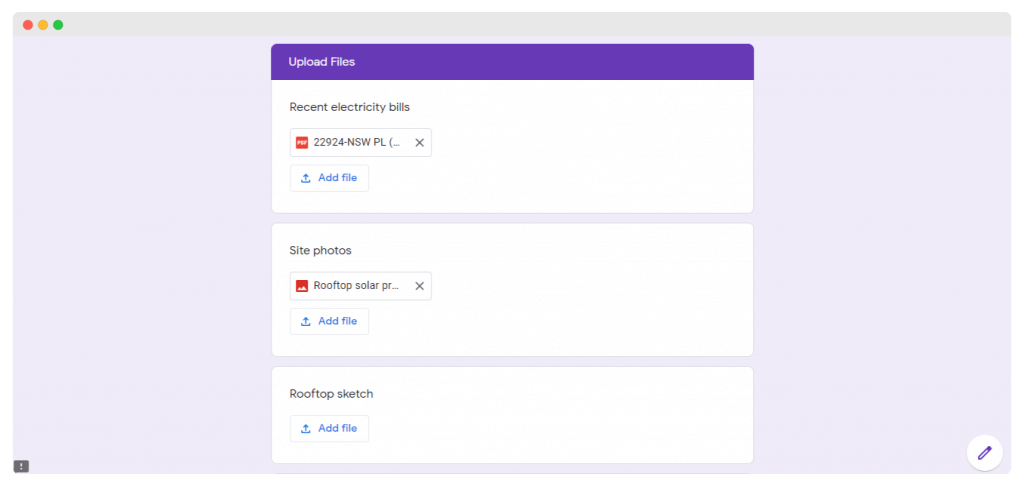
Download site survey form as PDF Get this as a Google Form, in your Google Drive account
Site survey report
Details from site survey are subsequently used by the engineering and project teams, for design, analysis and proposals. They need a well structured site survey report to refer to.
Basic requirements of a solar power plant site survey report:
- It should provide clear and complete understanding of the project site to the proposals team, so that they can create a techno-commercial proposal without any assumptions.
- It should also provide a notional understanding of the prospect’s budget and readiness for a new solar PV installation, for deciding the commercial details of the proposal.
- A report should be automatically generated as soon as the solar site survey is completed, to minimize the time taken between site survey and proposal submission . This is very important in order to keep the competitors from stealing your prospects. Solar sales tracking app helps you to directly email a site survey report to your team from your mobile phones.
- It would be very useful to record the site survey report in your solar projects CRM . This way you can refer to these details easily at any point in future. Sometimes your customers ask you to come back after 5-6 months when they have budget. At that later time, you would have the site survey report available at your fingertips.
- It is quite common for solar PV installers to work with partners on some projects. Therefore your site survey report should be simple enough to be understood by anyone in the solar installation business.
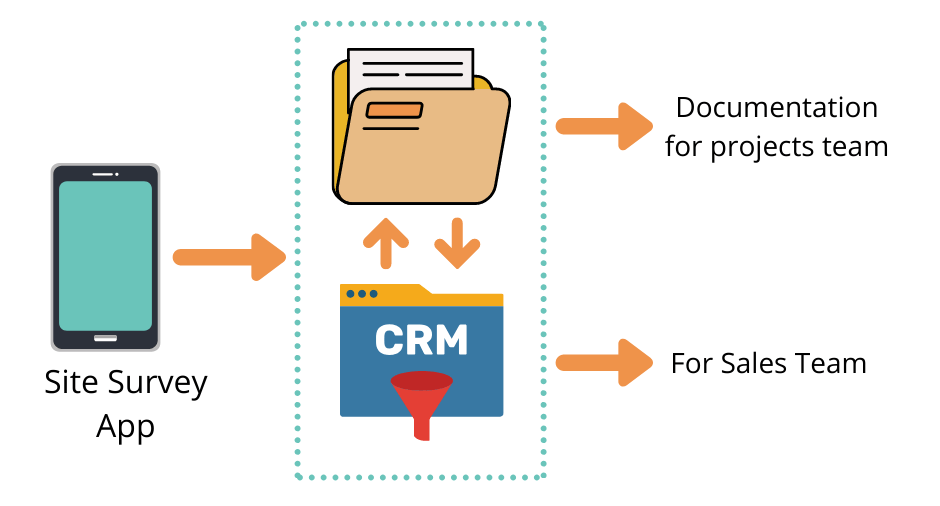
A solar site survey report should capture all required details from the customer’s side for creating a techno-commercial proposal. If your site survey app is connected to the CRM, site survey reports can be easily automated to make the whole process frictionless.
Report format
Any format should be fine, as long as the following key guidelines are followed –
- Use easy language and common terms used in the industry. So that if you decide to work with a partner on any project, they should be able to understand your reports.
- Use commonly accessible documents such as PDF, HTML, Email etc.
- Put all the information about – customer, site, electrical infrastructure, photos, documents etc. in one single file.
- Preferably, site survey should be done with a site survey app connected to CRM, so that the report remains easily accessible from a database.
- Sometimes the site surveys are done after the solar system has been sold to the customer. As part of quality assurance, you may also do a post-installation site survey. In that case you may want to integrate the site survey app to your solar project management or solar ERP solutions.

Online Trade Magazine Alternative Energy from Solar, Wind, Biomass, Fuel Cells and more…
One of the standard stages when considering solar for your home is the solar site visit. This involves a solar installer coming out to your home and inspecting your roof for the potential installation of a home solar system.
Preparing for a Solar Site Visit
Reginald A. Norris | Clean Energy Experts
- A brief interview with you, the homeowner, to understand your electricity needs
- A physical inspection of the solar site to see if it is suitable for solar.
The content & opinions in this article are the author’s and do not necessarily represent the views of AltEnergyMag
Comments (0).
This post does not have any comments. Be the first to leave a comment below.
Post A Comment
You must be logged in before you can post a comment. Login now .
Featured Product

NATURE'S GENERATOR POWERHOUSE
More alternative energy resources.
© 2010 - 2024 AltEnergyMag - All Rights Reserved Powered by BTH Management
Academia.edu no longer supports Internet Explorer.
To browse Academia.edu and the wider internet faster and more securely, please take a few seconds to upgrade your browser .
Enter the email address you signed up with and we'll email you a reset link.
- We're Hiring!
- Help Center

Solar PV Site Survey Format & Parameters to consider

Related Papers
S.M.Safayet Ullah
Esteban Zalamea , Reinaldo Sanchez
The roofs of houses located at middle latitudes receive significant solar radiation useful to supply their own energy demands and to feed back into the urban electricity network. However, solar panels should be properly integrated into roofs. This study analyzed roof geometry and integrated solar performance of Photovoltaic, thermal-photovoltaic, and hybrid solar collection technologies on dwelling cases selected from a sample of recent housing developments in Concepción, Chile. Hour-by-hour energy generation estimates and comparisons with demand levels were calculated for representative days during seasons of maximum, minimum as well as mid-season. These estimates took into account the roof tilt and orientation effects also. Trnsys@ software was used to determine electricity supply and F-Chart tool for thermal energy supply. The results show five times more panels can be placed on the largest and most regular shaped roof sections than on those with the smallest and most irregular shapes. The house model with the largest roof section can provide up to six times more energy than the model with the smallest second roof section in different seasons and systems. This paper thus provides new findings on the performance of solar technologies when related to home ener- gy demands and roof geometry.
International Journal of Applied Power Engineering
International Journal of Applied Power Engineering (IJAPE)
The photovoltaic (PV) panel makes it possible for everyone to produce electricity in their own house. However, the panel is quite a costly investment and requires much consideration to maximize its potential. The roof has variables that would impact electricity generation. The roofs of houses in Indonesia were generally built in a complex shape, a combination of gable and hip roofs. This research was conducted to break down factors affecting PV productivity with regard to the roof’s aspects. A computer simulation using the Ladybug plugin in Rhinoceros software has been done to achieve the target. Initially, the performance of PV panels on the gable and hip roof is analyzed separately. It is found that the roof’s slope and orientation contribute more to the amount of electricity produced than the shape itself. These factors were used to assess the PV potential in several housing models employing simple and complex roof (more than 2 surfaces) construction in the city of Gorontalo. Eventually, a comparison between the estimation of real PV production on housing and the estimation provided by the simulation is conducted to verify the assessment method. The difference is about 4%, which is proof that the simulation result is reliable.
2015 International Conference on Smart Technologies and Management for Computing, Communication, Controls, Energy and Materials (ICSTM)
Saurabh Biswas
Solar Photo Voltaic (SPV) systems are expected to become one of the most ideal renewable energy resources in India which can be implemented in large scale across different states. This paper presents in-depth investigation of various tools available for the assessment of building rooftops. The gaps in these tools have analyzed in detail. The pressing need of developing a new user friendly tool has been substantiated in this paper. The features and parameters which should be included in the new software/tool have been deliberated in detail. Various formulae and the procedure which need to be programmed in the development of new software have also been discussed in detail. The findings presented in this paper are expected to provide a pathway forward for precise building rooftop area calculations leading to efficient space utilization and subsequent environment benefits.
Akbar Alidadi Shamsabadi , Ali Seryani
According to the studies, photovoltaic (PV) systems are considered as one of the most extensively used and practical means of using solar energy. One of the applications of such systems is their home application. Establishing photovoltaic systems on the roofs and gables of residential buildings have received a good appreciation around the world within the recent years as with the ever increasing trend of urban life and subsequently the decrease of sufficient space for establishing such generators, now the necessity of using the dead spaces of rooftops of the residential buildings is sensed more than ever. Considering the potential of Iran due to its suitable geographic position and specially concerning Tehran metropolitan, having on average 5 hours of sunlight per day, and considering 2,214,498 residential units in Tehran, and thereby the great number of dead spaces in the rooftops of residential buildings, the necessity of conducting this research is felt even more. In this article, while briefly introducing the network connected photovoltaic (PV) systems and the term of utilizing them on rooftops of buildings, precise and optimized design and layout of solar panels (including the number of rows, length and width of panels , distance between panels and the slope of panels to horizon) are provided using PVSOL software. Moreover, reviewing several printed articles while having a new attitude toward the field of renewable energies, we have presented the main and functional criteria and measures for installation of photovoltaic (PV) systems stationed on rooftops of residential buildings. Further, considering high diversity of the influencing indicators on the efficiency of photovoltaic (PV) systems in Tehran city, we have conducted a case study (Ekbatan residential complex) with the purpose of precisely implementing the indicators extracted by the present research.
IAEME Publication
In a view of global energy scenario and to meet increased demand for energy, solar energy has been harvesting at faster rate across the world. To achieve the goal of sustainable development the maximum use of renewable resources is essential. In that respect, solar energy harvested in different ways such as solar thermal, solar photovoltaic etc. Similarly a solar photovoltaic systems have different configurations like, grid-connected, stand-alone which are either on ground surface or on rooftop. In this paper the grid-connected solar rooftop PV (RTPV) for Government College of Engineering, Aurangabad has discussed. Under Net-metering policy for the state of Maharashtra for grid-connected RTPV, the CAPEX model and the RESCO model are discussed. Estimation of RTPV capacity for given site is done based on contract demand or sanctioned load, utility distribution capacity and available shadow free area for RTPV installation. With estimated capacity of 119 kWp, the annual saving in electricity bill and payback period calculations are done in section-IV.
Solar Energy
Rhythm Singh
Amitabh Bhardwaj
shamil priyappan
RELATED PAPERS
Julio Thomaz
Tatiana Petrachi - Jipa(Girba)
Gunn Engelsrud
Massimo Melli
Revista de História da Sociedade e da Cultura
Koldo Trapaga Monchet
World Archaeology
Sabah Jasim
Amir Faizal
Archaeology of the Eurasian Steppes (Arkheologiya Evraziyskikh stepey)
francisco hosap martin
NUOVA GIURISPRUDENZA CIVILE COMMENTATA
ALESSANDRO D'ADDA
Publisher ijmra.us UGC Approved
Mary Garzon
Journal of Interpersonal Violence
Penny Fisher
HAL (Le Centre pour la Communication Scientifique Directe)
Jacques Fauquant
hilman fahmy
Social Science & Medicine
Proceedings of the Twenty-Eighth International Joint Conference on Artificial Intelligence
Abdimas Galuh
abdul khobir
Judit Stummer
麦考瑞大学毕业证文凭办理成绩单修改 办理澳洲MQ文凭学位证书学历认证
Global change biology
serena como
RELATED TOPICS
- We're Hiring!
- Help Center
- Find new research papers in:
- Health Sciences
- Earth Sciences
- Cognitive Science
- Mathematics
- Computer Science
- Academia ©2024

IMAGES
COMMENTS
The site visit was conducted to first assess the suitable space for solar ... To assist in actual implementation of the solar PV power plants, the report has also given project implementation schedule of around 15 weeks. The various operation and ... Typical load of rooftop solar power plant is about 15-20 kg/sq.m., which seems manageable for ...
Site Name : 500 kWp Floating Solar Farm Site Name & Address : Banasura Sagra Dam, Wayanad Kerala Date of Visits rd : 23 December 2017 Energy Auditors : Prof. Chem Nayar, TSL Sujith Rajan, TSL Naijo Dominic, TSL Visit Hosted by : Mr. Ravindran, Designation & Company A team of three Engineers from TSL made their visit to the site on 23rd December ...
Sample Site Survey Checklist. General Details. Solar PV Array Details. Tip #3: Prepare the proper measuring tools. Tip #4: Ensure to inform the right people before the visit. Tip #5: Make sure the right people attend. Tip #6: Take a lot of pictures. Tip #7: Take videos for documentation.
A detailed site visit report was submitted on October 16, 2008; this report is briefly summarized below. 2.1 Site Visit Summary . SRA and City of Houston staff conducted a site visit of the Holmes Road Landfill on August 19, 2008. The site was visible on three sides from the road, but was not accessible via auto, and only small portions
Report - Visit of an open-cast coal mine, solar power plant and biogas-plant, in Bradenburg / Cottbus. ... The rest were renewable energy plants such as The Lieberose Photovoltaic Park that is the world´s third-largest solar power plant with a production of 70.8 (MW) by 900,000 solar panels. Also biomass and Wind Power Plant were seen.
Solar Site Survey Checklist Sample PDF Report | SafetyCulture. Analyze your findings - After completing the survey, the final step is to make sense of the data you collected. It involves calculating the potential energy production of the solar panels, installation costs, and potential energy savings over time.
examine the performance of the solar power plant Estadio Pituacu. Thi. represented approximately 38.6 % of the entire system's power. Measurements of 22 sub-arrays with 1.728 kWp, 20 sub-arrays with 1.872 kWp, 18 sub-arrays with 4.240. kWp and one sub-array with 5.830 kWp rated power each were taken. The sub-arrays are comprised of strings ...
As you can see, there's quite a bit of information gathered during the site survey. Here's a quick roundup of the 10 steps in a solar site survey: Gather information and schedule the appointment. Pull satellite or aerial imagery of the property. Get prepared. Assess the condition of the roof.
Acknowledgments. This report was prepared by Navigant Consulting, Inc. under the guidance of Amy Jiron and Kristen Taddonio of the U.S. Department of Energy's Better Buildings Alliance program in collaboration with Olayinka Kolawole of the U.S. Department of Energy's SunShot program. The paper was reviewed by Sarah Truitt and Jason Coughlin ...
Site visits are important because they reveal details that can affect the installation or performance of the solar system. One example is solar access, or how much sunlight the site receives year-round. This information is critical since the more time a solar panel spends in the shade, the less energy it produces.
projects, solar policies, REC and carbon credits. 6. Immense information and material through worked-out examples, data sheets, discussions, etc. 7. Site visit to megawatt-scale PV power plant. Report on Solar Power Professional Workshops . A comprehensive overview of training workshops organized by GERMI pertaining to Solar Photovoltaic -
The document summarizes an industrial visit by electrical engineering students and faculty to a 25MW solar power plant in Mervadar-Upleta. The visit provided students practical knowledge about solar power generation processes including the solar panels, control room systems for monitoring and protection, and the transmission switchyard. The students learned about the layout, generation using ...
A solar survey checklist lists items that should be included in a survey of a potential solar power installation site. The checklist should include items such as the size and orientation of the site, the amount of shading, the availability of water and electricity, etc. By including these items on the checklist, solar installers can ensure that ...
C&I Solar Site Survey. Energy Storage Site Survey. Get a free Solar or Storage design quote. START HERE. Get a free Solar or Storage design quote. START HERE. CA Small Business Enterprise. Certification ID: 2015743. Bidder/Supplier ID: BID0068933. NAICS Codes: 541330 - Engineering services.
3 Site visit results The results of the site visit and its evaluation is presented in the following section. 3.1 Overview, description of the site and surroundings Figure 1: Location overview (Google Maps View) Figure 2: Aerial View (Google Earth View) Quaid-e-Azam Solar Park is located in the southeast of the city of Bahawalpur. The
TÜV SÜD helps you understand the site selection criteria for a solar power plant, and provides a reliable basis for final site selection and other decision-making. We analyse various site characteristics that impact the energy yield, project completion and lifetime of a solar power plant. We also review the geotechnical, environmental and ...
Evaluating the site-selection process for photovoltaic (PV) plants is essential for securing available areas for solar power plant installation in limited spaces. Although the vicinities of highway networks can be suitable for installing PV plants, in terms of economic feasibility, they have rarely been investigated because the impacts of various factors, including geographic or weather ...
They need a well structured site survey report to refer to. Basic requirements of a solar power plant site survey report: It should provide clear and complete understanding of the project site to the proposals team, so that they can create a techno-commercial proposal without any assumptions.
It is a critical step in the solar process and one that a potential solar customer should be prepared for. On a solar site visit, the solar installer comes to your home and conducts the following assessments: A brief interview with you, the homeowner, to understand your electricity needs. A physical inspection of the solar site to see if it is ...
We analyze various site characteristics that impact the energy yield, project completion, and lifetime of a solar power plant. We also review the geotechnical, environmental, and climatic conditions in the area and evaluate terrain usability to determine accessibility for grid connection. Our solar site assessments include: Measurement of solar ...
Saurabh Biswas. Solar Photo Voltaic (SPV) systems are expected to become one of the most ideal renewable energy resources in India which can be implemented in large scale across different states. This paper presents in-depth investigation of various tools available for the assessment of building rooftops.
TÜV SÜD's solar power site assessment helps you understand the site selection criteria for a solar power plant and provides a reliable basis for final site selection and other decision-making. During the solar power assessment process, we analyse various site characteristics that impact the energy yield, project completion and lifetime of a ...